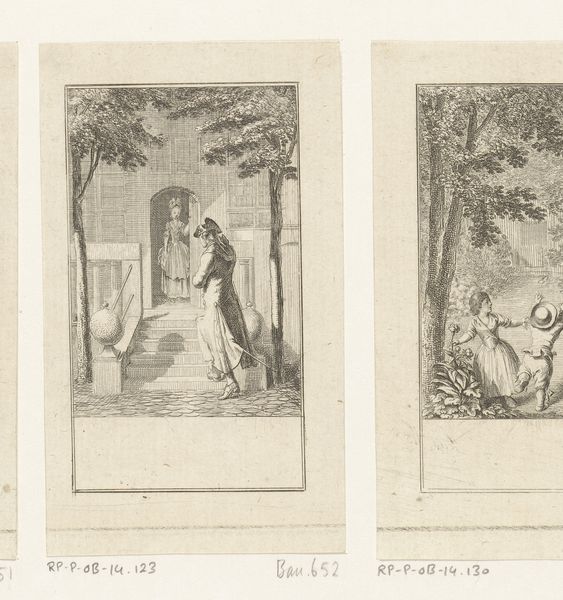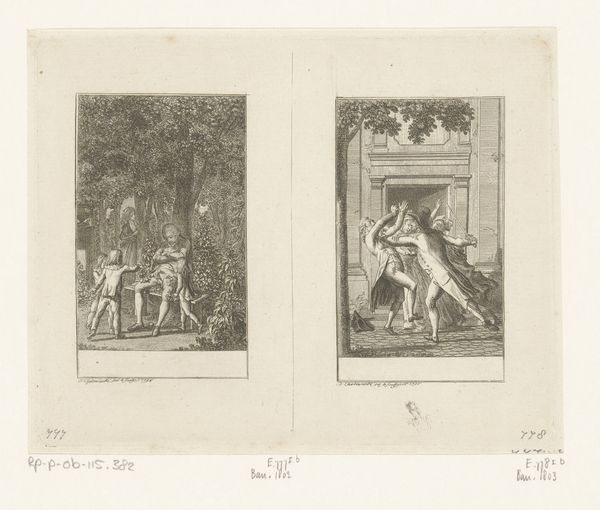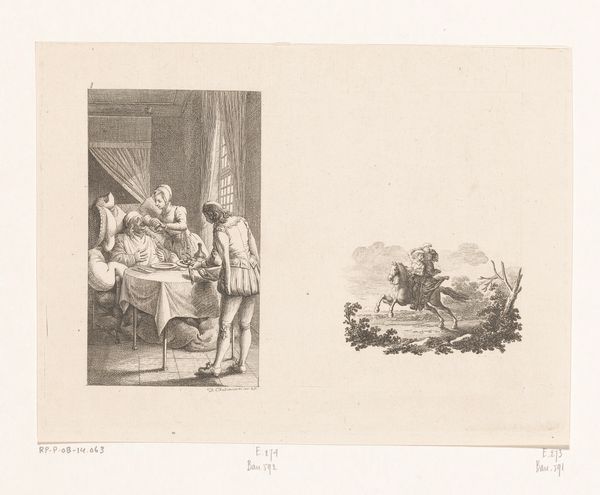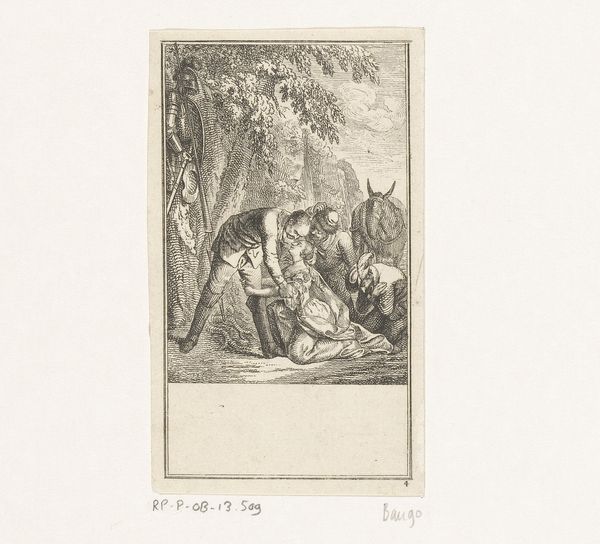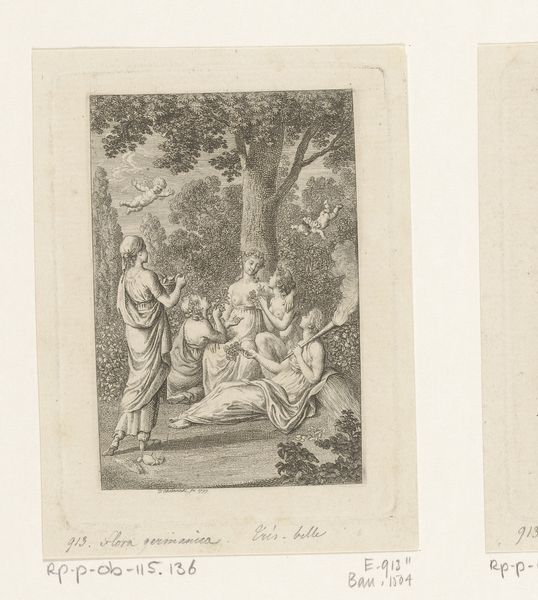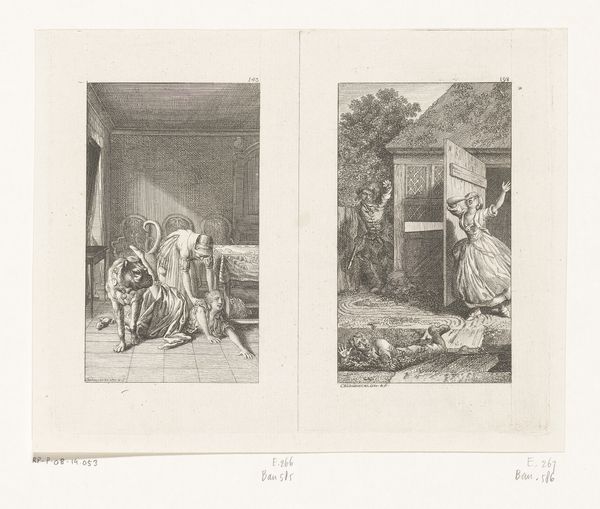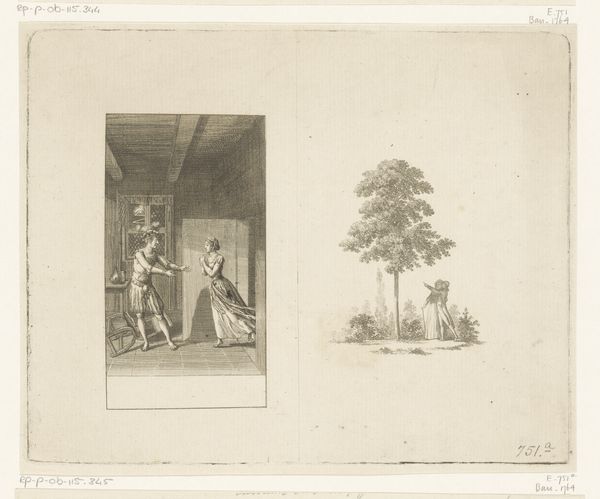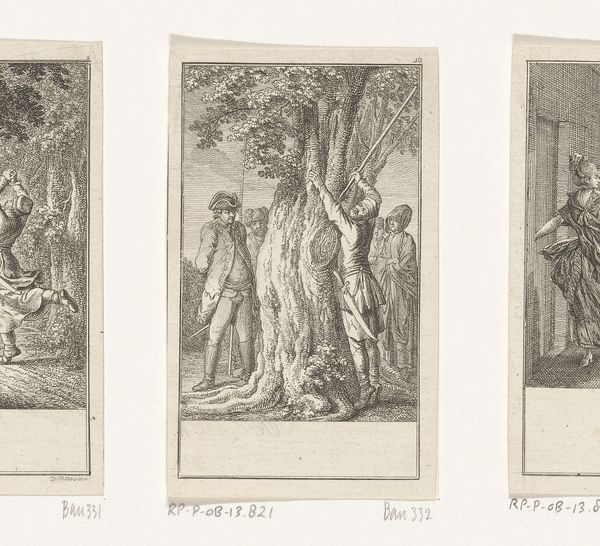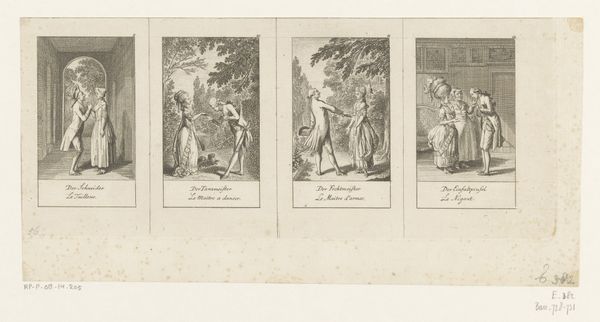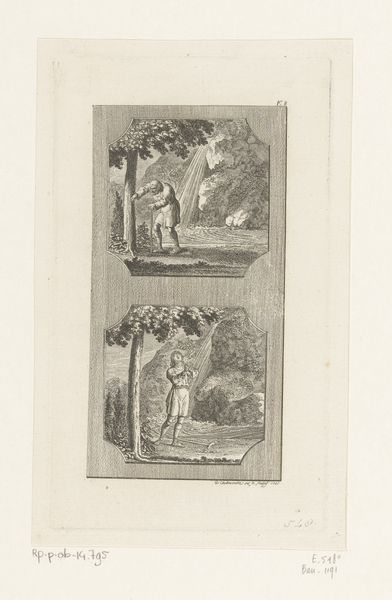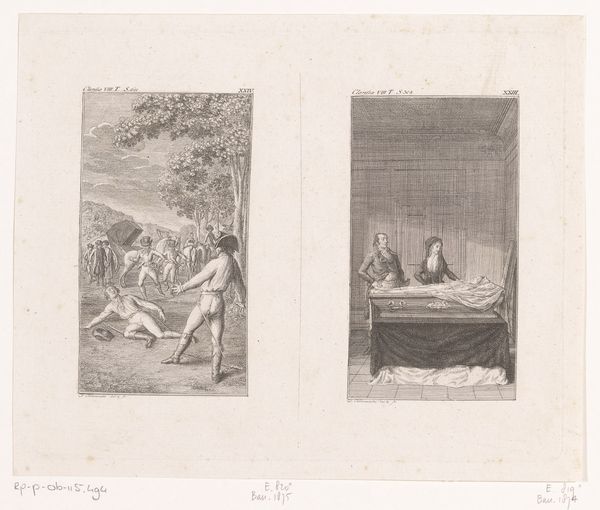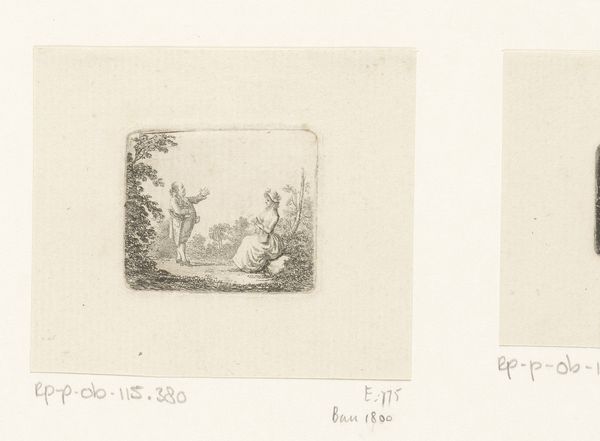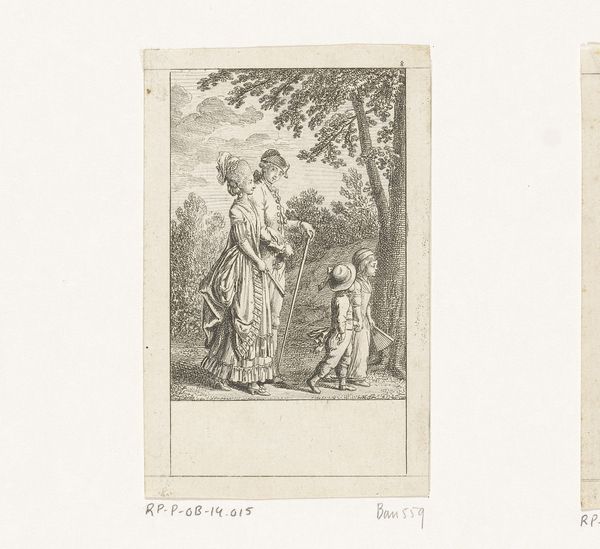
Dimensions: height 122 mm, width 146 mm
Copyright: Rijks Museum: Open Domain
Curator: Here we have "Twee scènes uit de Deserteur" (Two Scenes from the Deserter), an engraving made in 1774 by Daniel Nikolaus Chodowiecki. It’s currently held here at the Rijksmuseum. Editor: My immediate impression is one of stark contrast. The composition feels divided, both in subject and mood. On one side, there's a sense of quiet, melancholic interiority; on the other, open exposure and potential shame. Curator: Indeed. Chodowiecki's piece comments on desertion from the military during that period. Prints like these circulated widely and functioned almost like political cartoons, influencing public sentiment. The "genre-painting" element invites viewers to consider everyday life through a moral lens. Editor: The woman in the first scene… her posture, slumped at the table, feels heavy with symbolism. The fallen slipper near her foot hints at a loss, a disruption of domesticity. And on the right, the soldier in his underwear appears in an exterior scene gesturing to something, while some item is discarded in the background. It’s like two sides of the same story. Curator: Precisely. The discarded garment perhaps suggests societal rejection. Consider also that this artwork comes during a time when there's a transition of societal roles with many of the Enlightenment values gaining acceptance in mainstream culture, potentially influencing how desertion was perceived versus blind obedience to the military. Editor: The engraver also directs our emotions. The stark interior is built out of straight lines with a cold light while the exterior scene evokes Baroque elements—gestures, flowing garments and landscapes—creating this effect on an emotional landscape. I think those aesthetic and thematic choices must work hand-in-hand. Curator: Definitely. What I find compelling is its function in cultivating public opinion. The accessibility of prints allowed Chodowiecki to insert himself into a broader discourse around moral conduct and civic duty. This piece reveals societal attitudes towards the military institution. Editor: Yes, looking at it with contemporary eyes, these prints reveal an artistic method for engaging social commentary. They encourage conversation on values and civic life—and the psychological and social weight of personal choices, even centuries later. Curator: This work reminds us that images never exist in a vacuum; they’re part of ongoing dialogues about morality and the role of institutions. Editor: I agree. Chodowiecki's piece, beyond its technique, offers lasting insights into the complexities of decision-making, and moral reflection within societal pressures.
Comments
No comments
Be the first to comment and join the conversation on the ultimate creative platform.
